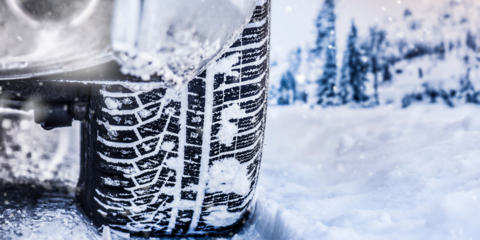
Mastering the Whiteout: 10 Essential Snow Driving Techniques for UK Roads
Following these top 10 tips, you can drive as safely as possible when snow hits
Driving in the snow can be treacherous if you're not prepared. Snow, ice, and freezing temperatures can make road conditions extremely hazardous. Even though living in the UK, we aren't hit with too much snow and ice each year, it’s still important to be vigilant and aware of the different driving styles when it comes to driving in the snow and ice.
By following these top 10 tips, you can drive as safely as possible when snow hits.
- Check Local Weather and Travel Reports
Before setting off, check the local weather forecast and travel reports. This will give you advanced warning of any expected snowfall or icy patches on the roads. Local radio stations and websites like the Met Office, BBC, and traffic services provide regular condition updates. - Clear Snow Off Your Car
Make sure to thoroughly clear all snow and ice off your vehicle before driving. Snow left on the roof can slide down and obstruct your view. It can be very tempting to set off with ice still on your windows, but make sure you clear all ice and snow. Remember, remaining snow or ice on the windows, lights, mirrors and number plates is illegal. So always fully clear snow away for visibility and safety. - Drive Slowly
When roads are snowy or icy, drastically reduce your speed. Driving at slower speeds gives you more reaction time to brake gradually. Maneuver carefully and stay in control if your car starts to skid. Never assume roads have been gritted and drive faster just because other motorists are. - Increase Stopping Distances
In snowy conditions, the distance your car takes to stop significantly increases, so leave at least double the normal recommended gap between you and the vehicle in front. This gives you space to stop slowly and avoid collisions if they brake suddenly. - Brake Gently
Harsh braking causes skidding on slippery surfaces. When you need to slow down, brake very gently to stay balanced. If your wheels lock, ease off the brakes then reapply gentle pressure. - Stay in High Gears
It can be daunting to do this but use high gears to gently and smoothly pull away. Manoeuvring your car this way means you will have more grip in the snow, and you’ll be able to climb hills in snowy or icy conditions. This helps avoid wheel spin. Stay in high gears even when travelling at slow speeds. - Avoid Harsh Steering or Acceleration
Sudden steering wheel movements or heavy acceleration can cause loss of control and skidding. Move the steering wheel delicately and accelerate gently for better traction. - Equip Your Car Appropriately
It’s unlikely you will have snow tyres fitted but it’s always worth checking your tyre tread and air pressure. Also check battery life, fluid levels, wipers, lights, ventilation and heating before winter journeys. Carry emergency equipment like de-icer, scraper, torch, warm blankets, food and a shovel - it’s better to be safe than sorry, especially in the cold! - Avoid Undertaking Large Vehicles
Keep well back from the huge spray trails of salt, slush and surface water caused by heavier goods vehicles and snow ploughs. The diminished visibility and slippery surfaces underneath these vehicles make undertakings hazardous and can cause serious accidents. - Take Regular Breaks
Driving for long periods in bad weather is tiring. Take regular breaks in safe laybys or service stations to rest and recover concentration levels. Also, ensure mobile phones are charged sufficiently for emergency calls if needed. It’s handy to have a charging cable or portal charger/power bank in your vehicle at all times.
Driving in hazardous wintry conditions requires additional caution and diligent preparation to stay safe on the road. Snow, along with ice and freezing temperatures can dramatically alter road surfaces reduce visibility and control and increase stopping distances for motorists. The results are highly dangerous driving scenarios that cause accidents, injuries, and disruption across the UK every winter.
By closely following these key tips, you can stay safer on snowy and icy roads across the UK during the winter months. Drive attentively, steer and manoeuvre gently, allow greater stopping distances and reduce speed considerably. Preparation and caution are essential to cope with hazardous conditions. With extra diligence, drivers can reach their destinations securely despite snowfall.
